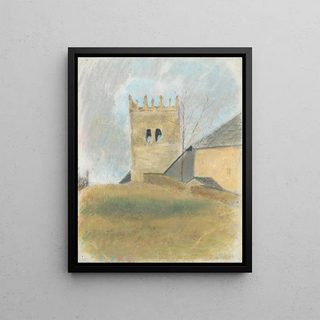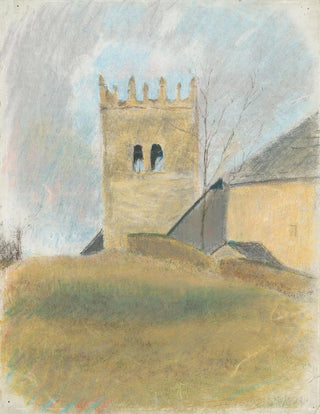Art print | Beffroi de Strky - Ladislav Mednyánszky


View from behind

Frame (optional)
In the world of art, some works manage to transcend time and space, captivating viewers with their beauty and depth. The art print of Beffroi de Strky - Ladislav Mednyánszky is a perfect example. This canvas, imbued with poetry and melancholy, transports us to the heart of a landscape where architecture and nature intertwine harmoniously. By contemplating this piece, the viewer is invited to explore not only the scene depicted but also the emotions and stories it emanates. The soft light caressing the contours of the buildings and the delicacy of the colors evoke an almost dreamlike atmosphere, where every detail seems charged with meaning.
Style and uniqueness of the work
Mednyánszky's style is distinguished by his ability to capture the very essence of the places he paints. In the Beffroi de Strky, the artist deploys a palette of refined colors, oscillating between warm tones and cooler shades, thus creating a captivating visual balance. The architectural lines are rendered with precision, while the surrounding landscape is treated with a freedom reminiscent of impressionism. This fusion of realism and expressionism allows the artwork to breathe, evoking a lively and vibrant atmosphere. The interplay of light and shadow, as well as the delicate textures, reveal undeniable technical mastery that testifies to Mednyánszky's skill. Each element, from the majestic belfry to the trees surrounding it, contributes to the visual narration, inviting the viewer to immerse themselves in a universe that is both familiar and mysterious.
The artist and his influence
Ladislav Mednyánszky, an emblematic figure of Hungarian painting, knew how to mark his era with his unique approach to landscape representation. Born in 1852, he was influenced by the great masters of European painting while developing a personal style that was his own. Mednyánszky traveled across Europe, immersing himself in various artistic cultures and landscapes he encountered. His work bears witness to a particular sensitivity to

Matte finish

View from behind

Frame (optional)
In the world of art, some works manage to transcend time and space, captivating viewers with their beauty and depth. The art print of Beffroi de Strky - Ladislav Mednyánszky is a perfect example. This canvas, imbued with poetry and melancholy, transports us to the heart of a landscape where architecture and nature intertwine harmoniously. By contemplating this piece, the viewer is invited to explore not only the scene depicted but also the emotions and stories it emanates. The soft light caressing the contours of the buildings and the delicacy of the colors evoke an almost dreamlike atmosphere, where every detail seems charged with meaning.
Style and uniqueness of the work
Mednyánszky's style is distinguished by his ability to capture the very essence of the places he paints. In the Beffroi de Strky, the artist deploys a palette of refined colors, oscillating between warm tones and cooler shades, thus creating a captivating visual balance. The architectural lines are rendered with precision, while the surrounding landscape is treated with a freedom reminiscent of impressionism. This fusion of realism and expressionism allows the artwork to breathe, evoking a lively and vibrant atmosphere. The interplay of light and shadow, as well as the delicate textures, reveal undeniable technical mastery that testifies to Mednyánszky's skill. Each element, from the majestic belfry to the trees surrounding it, contributes to the visual narration, inviting the viewer to immerse themselves in a universe that is both familiar and mysterious.
The artist and his influence
Ladislav Mednyánszky, an emblematic figure of Hungarian painting, knew how to mark his era with his unique approach to landscape representation. Born in 1852, he was influenced by the great masters of European painting while developing a personal style that was his own. Mednyánszky traveled across Europe, immersing himself in various artistic cultures and landscapes he encountered. His work bears witness to a particular sensitivity to






